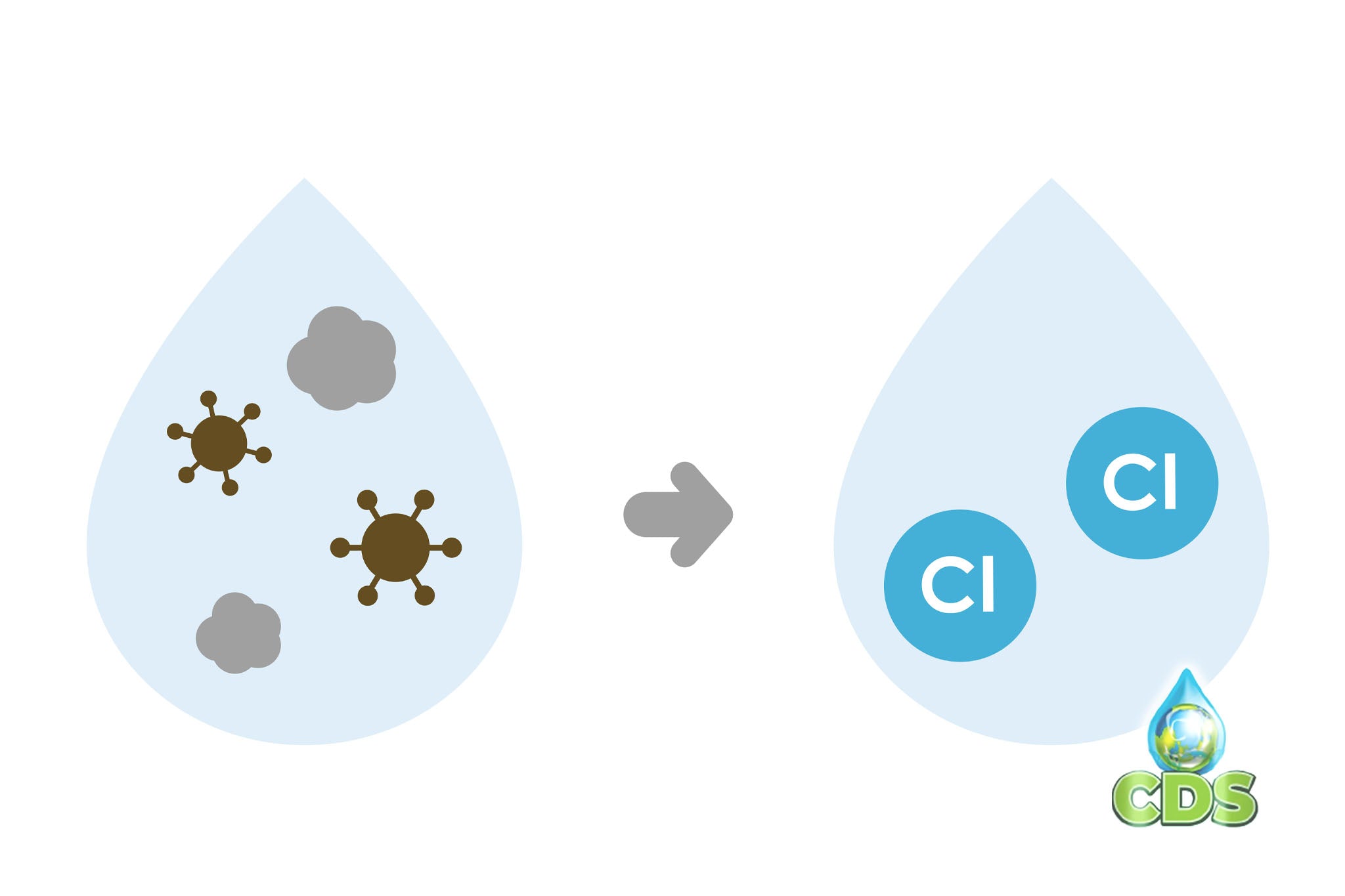What is Chlorine Dioxide?
Chlorine dioxide, a chemical compound with the formula ClO2, can also be used in the form of a solution for personal applications. This solution is commonly known as stabilized chlorine dioxide or chlorine dioxide solution. Let's delve into its characteristics, uses, and safety considerations to answer the question ~ What is Chlorine Dioxide?

Chlorine Dioxide (clo2) Physical Characteristics:
Chlorine dioxide solution is typically a diluted form of chlorine dioxide, usually mixed with water or other inert substances. It retains the antimicrobial properties of chlorine dioxide and is known for its effectiveness against a wide range of pathogens. The solution is often colorless or slightly yellowish, and it can have a mild chlorine-like odor.
Uses for Personal Applications:
1. Water Purification:
Chlorine dioxide solution is used by outdoor enthusiasts, campers, hikers, and travelers as a portable water purification method. It can effectively kill bacteria, viruses, and protozoa, making water safe for consumption. By following appropriate dosage instructions, the solution can disinfect drinking water from various sources, including streams, lakes, and questionable water supplies.
Learn more details here about Chlorine Dioxide for Water Treatment...
2. Surface Sanitization:
Chlorine dioxide solution can be utilized to sanitize surfaces in personal settings. It can be applied to clean countertops, kitchen utensils, cutting boards, and bathroom fixtures to reduce microbial contamination. Its broad-spectrum antimicrobial properties make it an effective option for maintaining a hygienic environment.
3. Mold and Mildew Control:
Chlorine dioxide solution can help combat mold and mildew growth in personal spaces. It can be used to treat areas affected by mold, such as bathrooms, basements, and damp areas, to inhibit their growth and reduce associated odors. Proper ventilation and moisture control are crucial in conjunction with chlorine dioxide treatment for optimal results.
For more general information about the versatility of our CDS formula, see our information page about Chlorine Dioxide Uses...

Safety Considerations:
When using chlorine dioxide solution for personal applications, it's important to consider the following safety precautions:
- Proper Dilution and Dosage: It's essential to carefully follow the instructions provided by the manufacturer regarding the dilution ratio and recommended dosage. Overuse or incorrect dilution may lead to adverse effects or reduced efficacy.
- Contact Time and Ventilation: Adequate contact time is necessary to ensure proper disinfection. Follow the recommended contact time specified by the manufacturer. Additionally, ensure sufficient ventilation during the application process to minimize inhalation exposure.
- Skin and Eye Protection: When handling chlorine dioxide solution, it is advisable to wear gloves and eye protection to prevent direct contact with the solution. This helps minimize the risk of skin irritation or eye injury.
- Storage and Shelf Life: Store chlorine dioxide solution as per the manufacturer's instructions, typically in a cool, dry place away from direct sunlight and incompatible substances. Adhere to the indicated shelf life to ensure the solution's efficacy and stability.
- Environmental Impact: Proper disposal of chlorine dioxide solution is crucial to prevent environmental harm. Follow local regulations for the safe disposal of unused solution or empty containers.
Remember, while chlorine dioxide solution can be an effective tool for personal use, it's important to use it responsibly, adhere to recommended guidelines, and prioritize safety to ensure its proper and effective application.
Learn more about using our 2-part kit for personal uses including hygiene and sanitation on our Chlorine Dioxide Benefits page...
Please note that specific products or brands of chlorine dioxide solutions may have their own usage instructions and safety considerations, so it's essential to refer to the provided information by the manufacturer.
